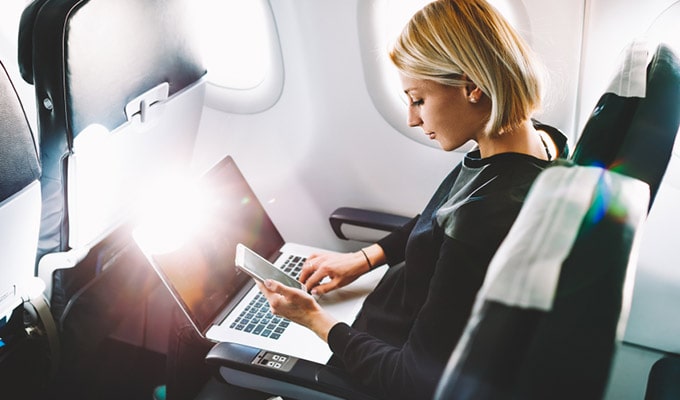4 Personal Items You Must Keep With You When You Board a Plane

It’s summer vacation time. That means crowded airports and full planes. It also means you’re more likely to find out when you get to the gate that there isn’t enough room for everybody’s carry-on bag.
Before you accept that offer to check yours for free, make sure you remove the following personal items. Put them in your handbag, knapsack, shoulder bag — whatever you put under the seat in front of you.
1. Glasses and Medications
When on a plane, it’s important to plan ahead for any medication needs. Due to the dry and pressurized cabin, you may need to remove your contacts or experience turbulence, making it difficult to access your items in the cargo hold. Therefore, it’s essential to bring essential medications such as decongestants, painkillers, and any prescription medications in your carry-on luggage. Checking prescription medications is strongly discouraged as they may be challenging to replace if your luggage gets lost or misplaced during your journey.
2. Phone chargers and power banks
Fact is, the FAA actually requires that you keep lithium batteries out of your checked luggage and bring them with you on the plane (limit 2 per passenger). And that can come in handy when you get to your destination and the power bar on your phone is reading 6%.
With a fully charged power bank in your carry-on, you can call your talkative aunt and let her yak yak yak while you wait wait wait for your luggage. If you can find an outlet and charge your phone while you wait, that’s even better. You’ll have plenty of juice for when Uber starts sucking power through your GPS to get a driver to you.
3. Cash
We’re talking real live paper dollars here. Or euros, or pesos, or whatever the local currency is going to be. Even if you told the credit card company you’re traveling, you never know when their algorithms are going to tag a swipe as suspicious and freeze your card.
Yes, you can call the credit card company and straighten it out. But while you’re grabbing a snack in the airport or trying to pay a cab driver, it can be a pain. With cash, you can just pay and go.
4. Extra forms of ID, and copies
It’s recommended to carry your passport with you even when traveling domestically. Unlike your driver’s license which is typically kept in your wallet, your passport can serve as a valid form of identification if your wallet is lost or stolen.
When traveling outside of the US, your passport is your primary form of identification. It’s a good idea to have a picture of your passport’s photo page stored on your phone, along with photos of all your other important documents like your itinerary and medical insurance cards.
It’s also a good idea to bring physical photocopies of these documents with you. In some situations, physical copies may be preferred over showing digital copies on your phone. This can save you time and hassle in case you need to show authorities your identification or other important documents.
At Alliance Direct Benefits, we’ll still be here for you when you travel or take a vacation. Get peace of mind with the Alliance Value Plan with the Global Emergency Services benefit if you ever need emergency evacuation while traveling. Call us at 1-800-733-2242 (M-F, 7am-5:30pm Central Time) or visit the Alliance Direct Benefits website today!